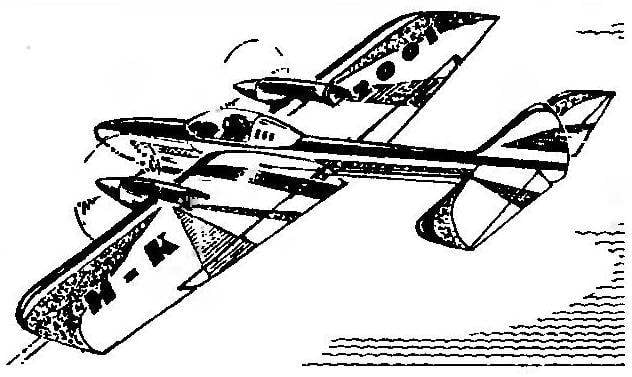 Flying cord “pilotage” — a beautiful sight, equally exciting for the athletes and spectators. Accordingly, among modelers-korovikov the number of adherents of flying is very high. And it could be much higher if not for problems with model aircraft engines. A small resource of internal combustion engines, the difficulty of obtaining fuel mixture, difficulty starting (especially in winter) — all of this contributes to the popularity of cord models with internal combustion engines in General and flight in particular.
Flying cord “pilotage” — a beautiful sight, equally exciting for the athletes and spectators. Accordingly, among modelers-korovikov the number of adherents of flying is very high. And it could be much higher if not for problems with model aircraft engines. A small resource of internal combustion engines, the difficulty of obtaining fuel mixture, difficulty starting (especially in winter) — all of this contributes to the popularity of cord models with internal combustion engines in General and flight in particular.
That is why KOR-device constantly looking for a replacement engine and cranky all pay more attention to electric.
At present, it created a powerful and compact electric motors, and small power sources of large capacity that allows you to create kordovye model, able to perform almost all complex maneuvers.
Today we will focus on the relatively simple twin-engine Cordova flight elektroleta.
The choice of the aerodynamic scheme of the model largely due to the relatively small capacity of available electric motors type DK-5-19. That is why the model is made with twin-engine. In addition to doubling the capacity of the improved airflow of the wing and flaps, which increased lift at low speeds, and stabilizer, which in turn favorably affected the maneuverability of the apparatus.
Wing elektroleta stacked design with a covering of Mylar film has a symmetrical profile Yak-55 (modified) with a relative thickness of 16.4 percent across the span (excluding the chord of the flap). This profile is most commonly used for aerobatic models — it has good bearing properties, and the nature of the stalling model with a wing of such profile is usually soft and smooth, which greatly simplifies piloting elektroleta.
The wing was assembled on a flat Board on which was fixed Plaz — sheet paper is made in 1:1 scale of the planned projection of this node model. After that, plasma was delayed with plastic wrap to set the wing are not stuck when assembling.
To improve the accuracy of the Assembly on the slipway is attached to two smooth rails at a distance of 110 mm from each other. Then with the help of pegs and pins were fixed front and rear edge of the wing, and the bottom shelf of the spar, then epoxy glue was set ribs.

